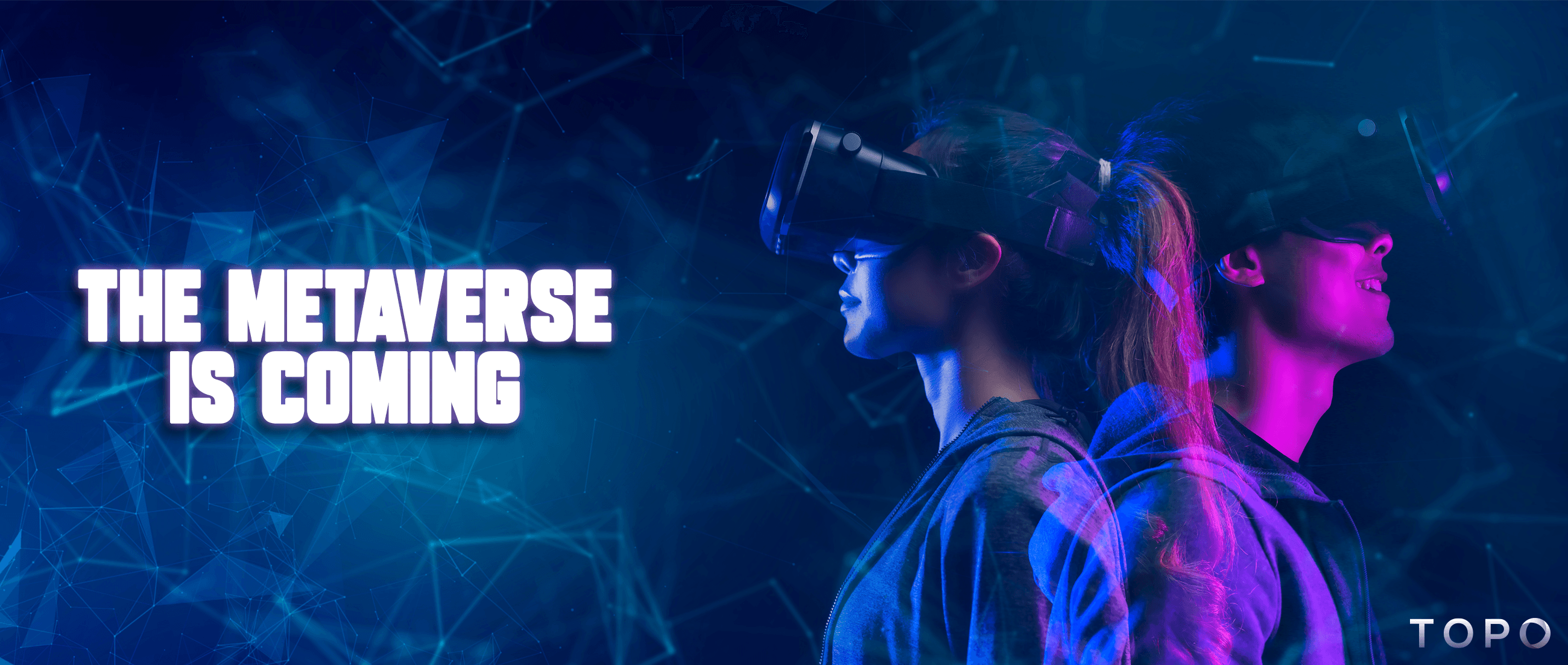The supply chain metaverse could present detailed information in an intuitive way, provide context through deeply immersive experiences, and make it easier to troubleshoot delays, blockages, and other issues.
We’ll explore the concepts of the metaverse and how they can drive supply chain excellence.
Defining the Metaverse
There’s no single definition of the metaverse, but we can understand some of the contexts from what experts are saying.
CNET describes it as, “sort of a future-forward social hub, a space where avatars can meet, an ecosystem for connected apps. A VR- and AR-ready dream of bringing people into some sort of virtual universe… …[an] admission that the future of tech doesn’t lie just in VR or AR, but in a mix of many devices accessing a shared online world”
Microsoft says the metaverse is, “apps [that] are the culmination of the intelligent cloud and intelligent edge working in harmony together—at their foundation is digital twins. Digital twins enable you to create rich digital models of anything physical or logical, from simple assets or products to complex environments. These environments can be energy distribution grids, warehouses, or factories—anything that’s important to you.”
Facebook says that, “The ‘metaverse’ is a set of virtual spaces where you can create and explore with other people who aren’t in the same physical space as you.”
Some of the common themes of the metaverse are:
- A central hub that brings together technology and information across diverse systems, data, and applications.
- A focus on virtual reality (VR) and augmented reality (AR) makes it easier to interact with the metaverse through an “avatar.”
- A collection of existing and future technology, from IoT devices to headsets, smartphones, and other gadgets that transfer information between the real world and the virtual one.
- A way to represent complex, real-world information and environments in a virtual, digital model that makes the data easier to understand, interact with, and change.
The complex, diverse, and distributed nature of supply chain ecosystems means the industry is well-positioned to take advantage of the metaverse.
The Technologies that are Building and Enabling the Metaverse
The metaverse relies on bringing technology, approaches, and data together to create a unified and interactive experience. Some of the key factors are:
- Human sensory input and output gadgets to perceive and interact with the metaverse. These will include VR goggles, AR glasses, movement sensors, motion tracking, tactile feedback, voice recognition and processing, immersive displays, wearables for fine control, and 3D environments.
- External monitoring, input, and output devices to measure, analyze, and manage the metaverse. These will include IoT sensors, still and video image processing, camera tracking, and spatial computing.
- Deeply connected, communal computing environments powered by the cloud and edge computing.
- Sophisticated artificial intelligence and machine learning algorithms to collect, process, manage, contextualize, and output human-readable data.
- Advanced software that underpins the metaverse, created by tech leaders like Google, Microsoft, Facebook, etc.
- Open principles and protocols allow for information exchange between people, systems, data stores, and the metaverse platforms themselves.
As John Riccitiello, the CEO of Unity Software – a platform for creating real-time, 3D tools – puts it: The metaverse won’t be “a singular application where someone is going to win… There’s going to be millions, if not billions of nodes.” In other words, just as there isn’t one website that is “The Internet,” there won’t be one app that is “The Metaverse.”
How the Metaverse Will Enhance the Supply Chain
Although the metaverse is still largely in its concept stage, we can predict how it can bring enormous benefits to supply chain management.
The Metaverse Can Help to Solve Problems in the Supply Chain
The supply chain currently has some significant challenges:
- It’s difficult for buyers to see, review, understand, and source new products, prototypes, and features.
- Supply chain data is often stored across multiple, siloed, bespoke systems that are not integrated together, preventing you from getting a centralized view.
- Quality control and auditing can be challenging, especially across multiple, international locations.
- There’s a lack of visibility of the flow of goods through the international supply chain, causing delays and bottlenecks that impact availability.
The metaverse can make it easier to measure, analyze, interact with, and solve these problems.
Metaverse Interaction with Complex Supply Chain Data Across Multiple Systems
The metaverse will collect together and model complex datasets that represent end-to-end processes in the supply chain. There are numerous opportunities to optimize the ordering, manufacture, transport, and distribution of goods:
- Visualize links between different supply chain suppliers and stakeholders so you can easily understand the flow of data, orders, and goods.
- Centralize information into one virtual environment so you have a consistent baseline.
- Rapidly review information from multiple sources to check that everything is progressing as it should.
- Visually interact with and drill down into specific areas for a comprehensive understanding.
- Identify blockages in orders, product flow, and transportation. Use these insights to remove bottlenecks and limit delays.
- Use augmented reality to superimpose data over a real-world environment—for example, using smart glasses to present an AR display that shows inventory levels when you view a particular QR code or item packaging.
The metaverse centralizes, models, and shares information so it’s easy to identify and solve problems.
Examples of Metaverse Technologies that Solve Supply Chain Issues
Metaverse Virtual Sourcing for the Supply Chain
Virtual sourcing makes it possible for buyers to understand and interact with virtual models of new or updated products. This could include:
- Collaborative communication, ideation, and design in a virtual environment that makes it easy to model and prototype digital versions of products.
- Get immersive, digital, interactive experiences with products.
- Optimizing information flow through the metaverse for the easy exchange of tech packs, product details, and other key factors.
- Visiting virtual trade shows and showrooms to investigate and review multiple products for your retailing niche.
The metaverse brings products to you, so you can boost your digital sourcing and procurement processes.
Metaverse Sensing for Quality, Compliance, and Sustainability
Quality is extremely important for supply chain compliance and consumer satisfaction. Testing and exercising quality control across large volumes of products could become much easier in a 3D environment:
- The latest camera technology combined with sophisticated image processing allows for the rapid scanning of factories, production lines, and products to ensure they’re meeting requirements.
- Laboratory testing, sample tracking, and sample room management results can be shared through a virtual environment to identify and resolve potential issues.
- Supplier and factory assessments can be completed virtually, without having to travel to the site.
- You can “be there” with an onsite auditor by using cameras, smart glasses, and other technologies that provide a local presence.
- IoT and other devices can monitor CO2 emissions and other environmental impacts, then display this so you can take actions to improve sustainability.
- You can virtually review packaging designs to reduce waste and streamline transport and distribution.
The metaverse lets us see any supply chain QC, auditing, or compliance gaps and helps us to close them.
The Metaverse Is Still in Its Early Stages, but We’re Ready
The metaverse is the next stage in the evolution of the internet. Making it a truly interactive and useful environment will require buy-in from the tech companies, big enterprises, specialist businesses, metaverse manufacturers, and multiple other stakeholders.
Here at Topo, we believe there are huge opportunities. Retailers, suppliers, manufacturers, logistics companies, and others who embrace this new ecosystem will be well-positioned to take advantage. We’re already putting the technology in place to support a supply chain metaverse.
This includes building a centralized supply chain platform that could empower the metaverse across several areas:
- Buying, Sourcing, and Product Development
- Quality Assurance, Quality Control, and Production Management
- CSR and Sustainability Management
Get in touch with us today to discover how we can optimize your supply chain now, and prepare you for an exciting and integrated future.
Topo is a whole new breed of supply chain management software. It is a powerful collaboration, automation, and analytics platform connecting all sourcing, quality, compliance, and sustainability stakeholders. You can collaborate with all members of your in-house team, manufacturers, and service providers throughout your supply chain.
















